RAMANA MAHARSHI
AND THE PATH OF SELF-KNOWLEDGE
Fourth edition,
first published in the USA
by Sophia Perennis
Sri Ramanasramam 2006
Tiruvannamalai
No part of this book may be reproduced
or transmitted, in any form or by
any means, without permission
For information, address:
Sophia Perennis, P.O. Box 151011
San Rafael, CA 94915
sophiaperennis.com
Library of Congress Cataloging-in-Publication Data
Osborne, Arthur, 19061970
Ramana Maharshi and the path of self-knowledge.
p. cm.
ISBN 978-1-59731-976-8 (ebook)
1. Ramana, Maharshi. 2. GurusIndiaBiography. I. Title
BL1175.R342O83 2006
294.5092dc22 2006000790
About the Book
ARTHUR OSBORNE has collected in this small volume all of the essential information relating to the life and teachings of Sri Raman Maharshi (18791950), one of the foremost sages of modern India. As a teenager, Sri Ramana realized the Self through a spontaneous act of self-enquiry without conscious effort or special training imparted by a teacher. In 1896 he left his home at Madurai and came to Arunachala (Tiruvannamalai), where he lived as an all-renouncing sage in a state of continuous Self-realization for fifty-four yearsuntil his mahanirvana in 1950.
Included in this volume are instructions given by Sri Ramana to early devotees, such as Sivaprakasam Pillai, Frank Humphreys, Kavyakanta, Natesa Mudaliar, and others, as well the experiences of Paul Brunton and other later devotees. Sri Ramanas central message is that Self-knowledge us not something to be acquired afresh but rather a becoming aware of ones own natural state of Pure Being through Self-enquiry. The teachings of Sri Ramana Maharshi represent the essence of the Advaita Vedanta, the quintessential expression of Hindu spirituality.
The heritage of India is enriched with numberless saints and yogis. Ramana Maharshi represents the tradition, and his spiritual greatness is guiding millions of people. Such master light the path and bring solace to suffering humanity.
THE DALAI LAMA
That spiritual function which can be described as activity of presence found in the Maharshi its most rigorous expression. Sri Ramana was as it were the incarnation, in the latter days and in the face of modern activist fever, of what is primordial and incorruptible in India.
FRITHJOF SCHUON
About the Author
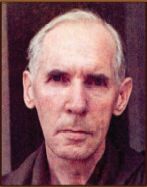 Arthur Osborne (19061970) was an ardent devotee of Sri Ramana Maharshi and particularly well known as founder-editor of The Mountain Path, the spiritual journal of Sri Ramanasramam. After completing his studies at Oxford, he moved first to Poland, then to Bangkok, where he lectured at Chulalonghorn University. Through a friend he learnt about French metaphysician Ren Gunon, whose works dealt comprehensively with Hindu metaphysics, and eventually translated into English Gunons Crisis of the Modern World. He later spent four years as a prisoner of war the Japanese before being reunited with his family in Tiruvannamalai. He spent the remainder of his life there, writing about Sri Ramana Maharshi and related subjects until his passing in 1970.
Arthur Osborne (19061970) was an ardent devotee of Sri Ramana Maharshi and particularly well known as founder-editor of The Mountain Path, the spiritual journal of Sri Ramanasramam. After completing his studies at Oxford, he moved first to Poland, then to Bangkok, where he lectured at Chulalonghorn University. Through a friend he learnt about French metaphysician Ren Gunon, whose works dealt comprehensively with Hindu metaphysics, and eventually translated into English Gunons Crisis of the Modern World. He later spent four years as a prisoner of war the Japanese before being reunited with his family in Tiruvannamalai. He spent the remainder of his life there, writing about Sri Ramana Maharshi and related subjects until his passing in 1970.
CONTENTS
PREFACE
IN WRITING THIS BOOK I have tried to make the meaning clear without using more foreign words than necessary. However, every language contains words which have no direct equivalent in another, and every science, spiritual as well as physical, has technical terms which scarcely admit of translation. Therefore it was necessary to use a certain number of Sanskrit and other words. These have been explained in the text, but for easy reference and for an approximate idea of their pronunciation, a glossary has been added. Since it is intended to help the general reader in his understanding of the book, I have not given simple dictionary definitions but rather an idea of the sense in which a word is used and of the doctrinal implications it carries.
ARTHUR OSBORNE
FOREWORD
I AM GLAD TO WRITE THIS SHORT FOREWORD to Mr Osbornes account of the life and teaching of Sri Ramana Maharshi. It has a special relevance to our age, with its dominant mood of wistful reluctant scepticism. We are given here a religion of the spirit that enables us to liberate ourselves from dogmas and superstitions, rituals and ceremonies, and live as free spirits. The essence of all religion is an inner personal experience, an individual relationship with the Divine. It is not worship so much as a quest. It is a way of becoming, of liberation.
The well-known Greek aphorism Know thyself is akin to the Upanishad precept atmanam viddhi, know the Self. By a process of abstraction we get behind the layers of body, mind and intellect and reach the Universal Self, the true light which lighteth every man that cometh into the world.
To attain the Good, we must ascend to the highest state and fixing our gaze thereon, lay aside the garments we donned when descending here below; just as, in the Mysteries, those who are admitted to penetrate into the inner recesses of the sanctuary, after having purified themselves, lay aside every garment and advance stark naked.
We sink into the measureless being that is without limitation or determination. It is pure being in which one thing is not opposed to another. There is no being to which the subject opposes himself. He identifies himself with all things and events as they happen. Reality fills the self as it is no longer barred by preferences or aversions, likes or dislikes. These can no more act as a distorting medium.
The child is much nearer the vision of the Self. We must become as little children before we can enter into the realm of truth. This is why we are required to put aside the sophistication of the learned. The need for being born again is insisted on. It is said that the wisdom of babes is greater than that of scholars.
Sri Ramana Maharshi gives us the outlines of a religion based on the Indian Scriptures that is essentially spiritual without ceasing to be rational and ethical.
DR. S. RADHAKRISHNAN,
VICE-PRESIDENT OF INDIA
1
EARLY YEARS
ARUDRA DARSHAN, the day of the Sight of Siva, is observed with great devotion by Saivites, for it commemorates the occasion when Siva manifested himself to His devotees as Nataraja, that is in the cosmic dance of creation and dissolution of the universe. On this day in 1879 it was still dusk when Sivas devotees in the little town of Tiruchuzhi in the Tamil land of South India left their houses and padded barefoot along the dusty roads to the temple tank, for tradition demands that they should bathe at daybreak. The red glow of sunrise fell upon the brown torsos of the men, clad only in a dhoti, a white cotton cloth wrapped round the body from the waist down, and flashed in the deep reds and golds of the womens saris as they descended the stone steps of the large square tank and immersed themselves in the water. There was a nip in the air, for the festival fell in December, but they are hardy folk. Some few changed under trees or in houses near the tank but most waited for the rising sun to dry them and proceeded, dripping as they were, to the little towns ancient temple, hymned long ago by Sundaramurthi Swami, one of the sixty-three Saivite poet-saints of the Tamil land.
The image of Siva in the temple was garlanded with flowers and taken in procession throughout the day and night, with noise of drum and conch and chanting of sacred song. It was one oclock at night when the processions ended, but still Arudra Darshan because the Hindu day stretches from dawn to dawn, not from midnight to midnight. The idol of Siva re-entered the temple just as the child Venkataraman, in whom Siva was to be manifested as Sri Ramana, entered the world in the house of Sundaram Ayyar and his wife Alagammal. A Hindu festival varies with the phase of the moon, like the Western Easter, and in this year Arudra Darshan fell on December 29th, so that the child was born a little later, both in time of day and year, than the divine child of Bethlehem nearly two thousand years before. The same coincidence marked the end of earthly life also, for Sri Ramana left his body on the evening of April 14th, a little later in time and date than Good Friday afternoon. Both times are profoundly appropriate. Midnight and the winter solstice are the time when the sun is beginning to bring back light to the world, and at the spring equinox day has equalled night and is beginning to exceed it.
Next page
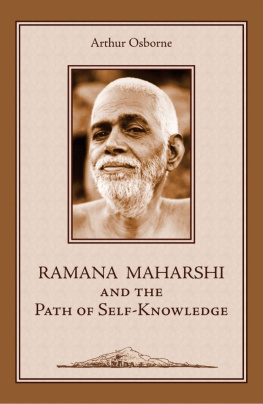
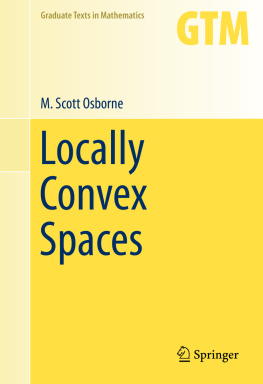


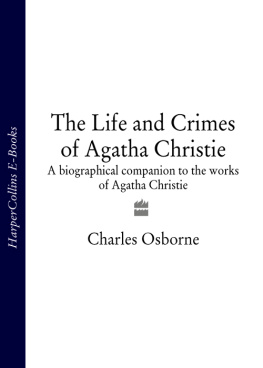

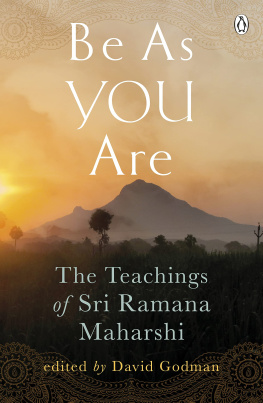
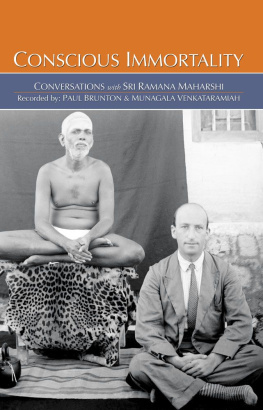
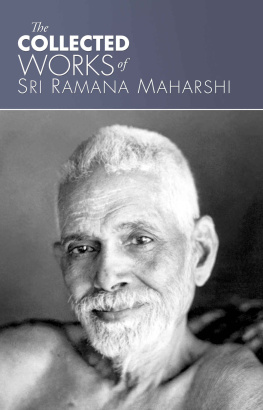

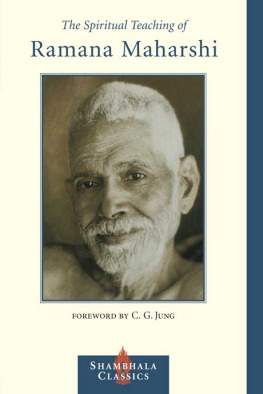
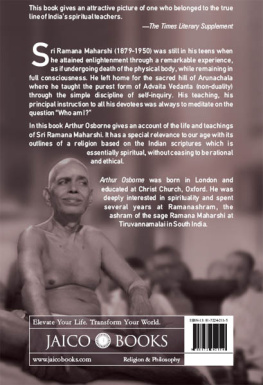
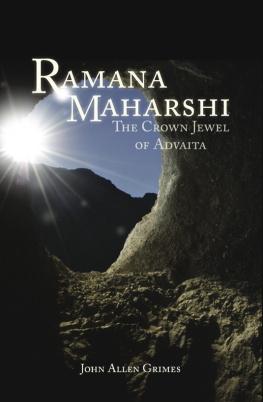
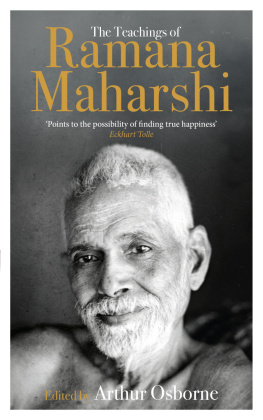



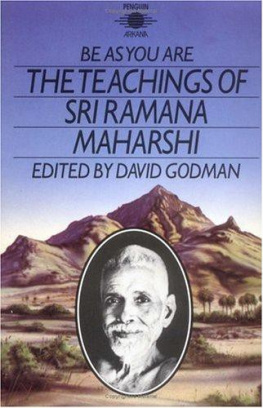
 Arthur Osborne (19061970) was an ardent devotee of Sri Ramana Maharshi and particularly well known as founder-editor of The Mountain Path, the spiritual journal of Sri Ramanasramam. After completing his studies at Oxford, he moved first to Poland, then to Bangkok, where he lectured at Chulalonghorn University. Through a friend he learnt about French metaphysician Ren Gunon, whose works dealt comprehensively with Hindu metaphysics, and eventually translated into English Gunons Crisis of the Modern World. He later spent four years as a prisoner of war the Japanese before being reunited with his family in Tiruvannamalai. He spent the remainder of his life there, writing about Sri Ramana Maharshi and related subjects until his passing in 1970.
Arthur Osborne (19061970) was an ardent devotee of Sri Ramana Maharshi and particularly well known as founder-editor of The Mountain Path, the spiritual journal of Sri Ramanasramam. After completing his studies at Oxford, he moved first to Poland, then to Bangkok, where he lectured at Chulalonghorn University. Through a friend he learnt about French metaphysician Ren Gunon, whose works dealt comprehensively with Hindu metaphysics, and eventually translated into English Gunons Crisis of the Modern World. He later spent four years as a prisoner of war the Japanese before being reunited with his family in Tiruvannamalai. He spent the remainder of his life there, writing about Sri Ramana Maharshi and related subjects until his passing in 1970.